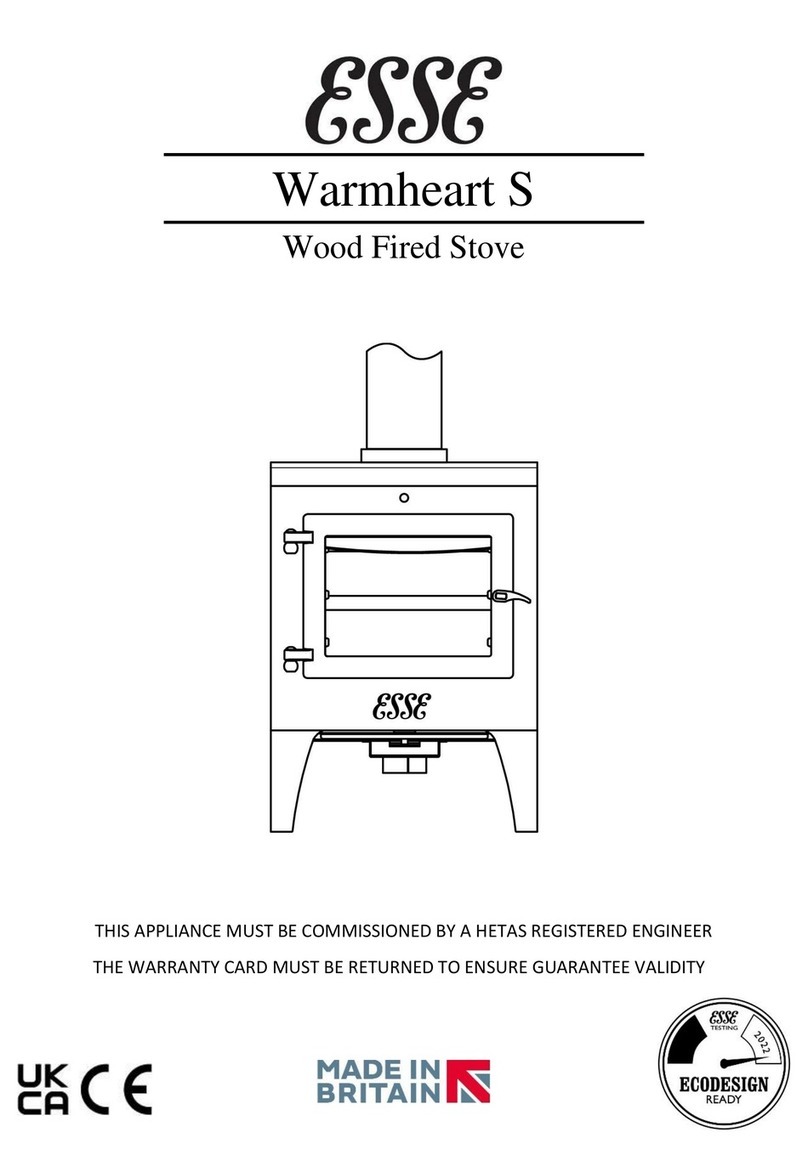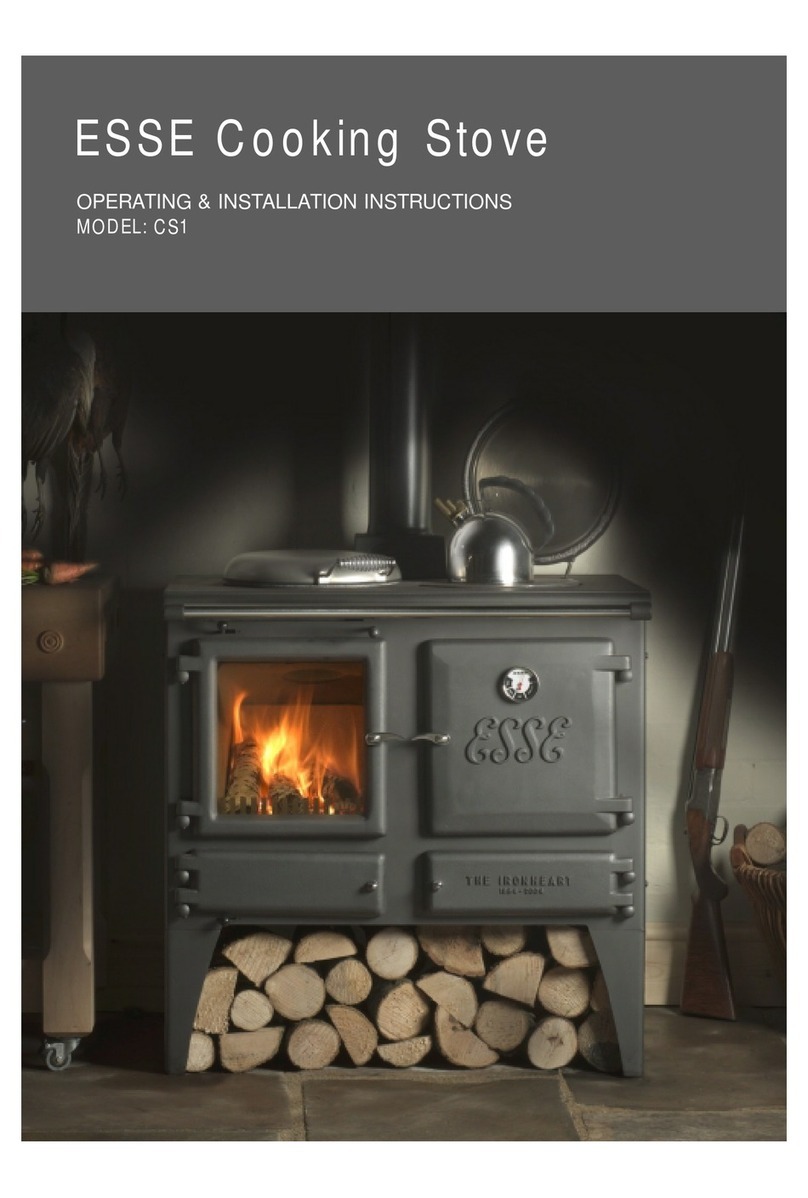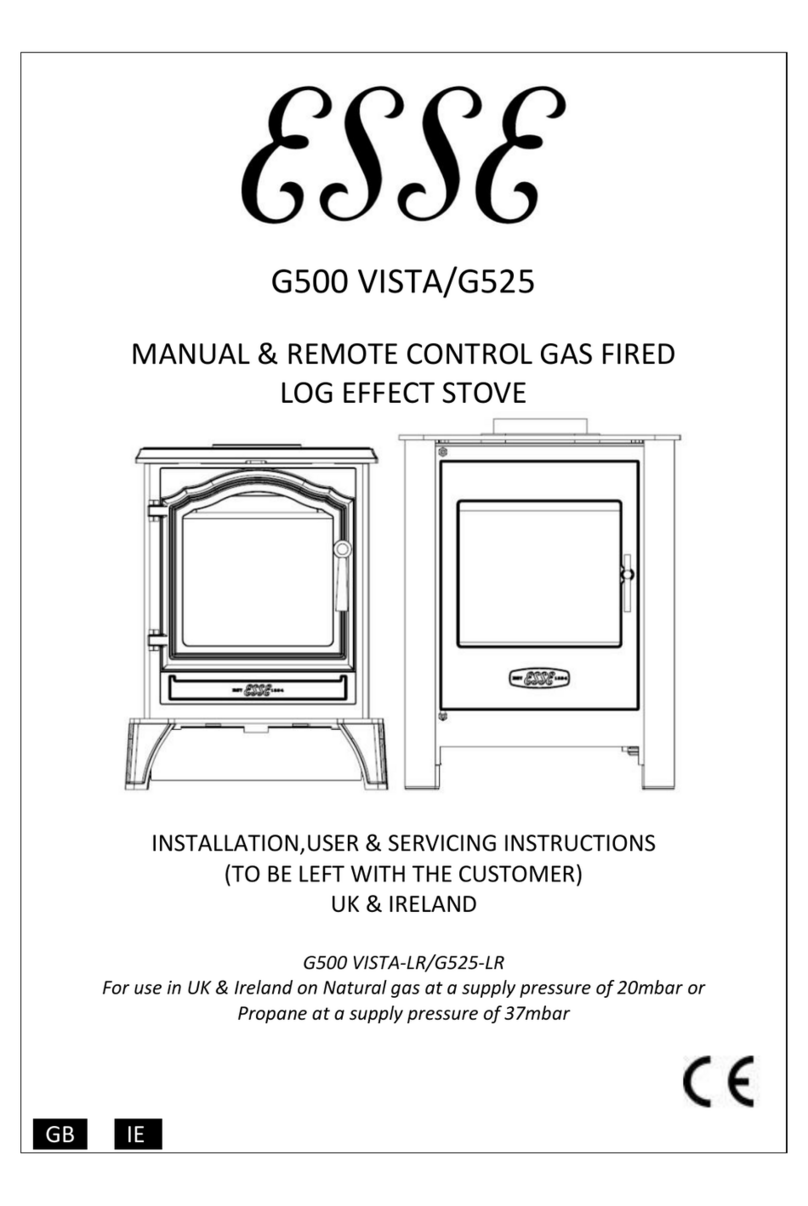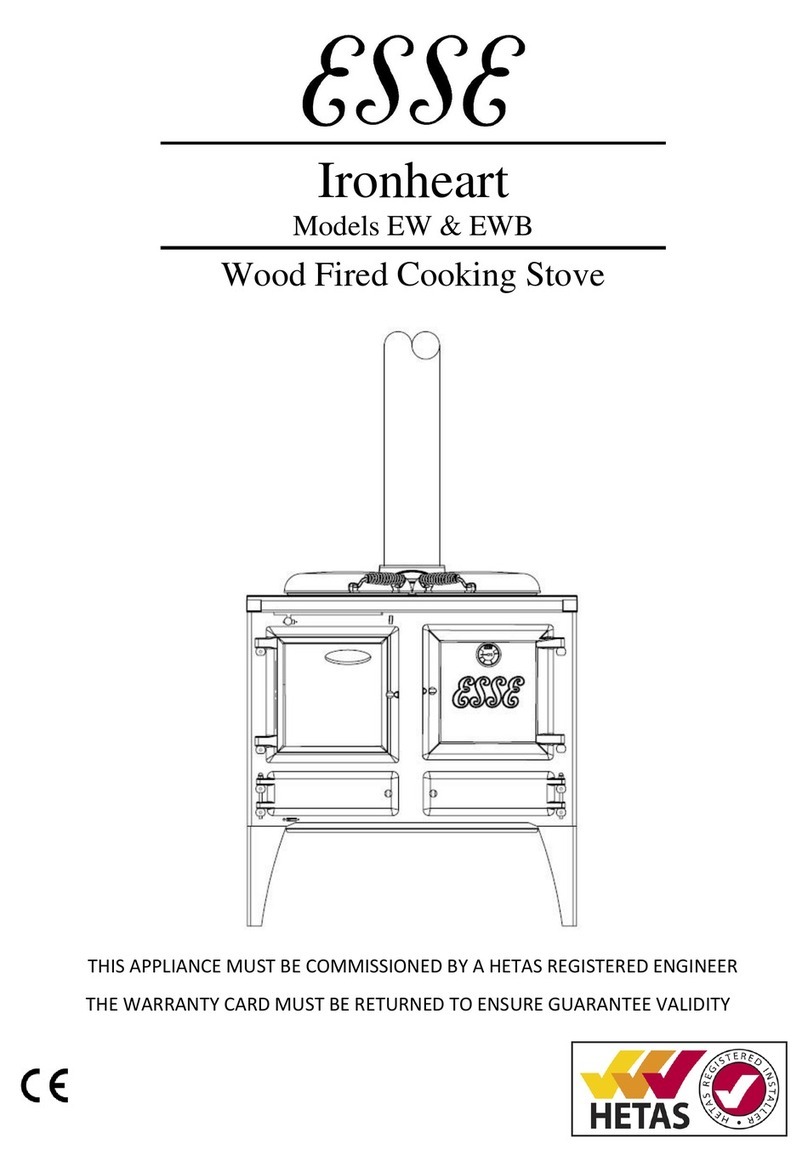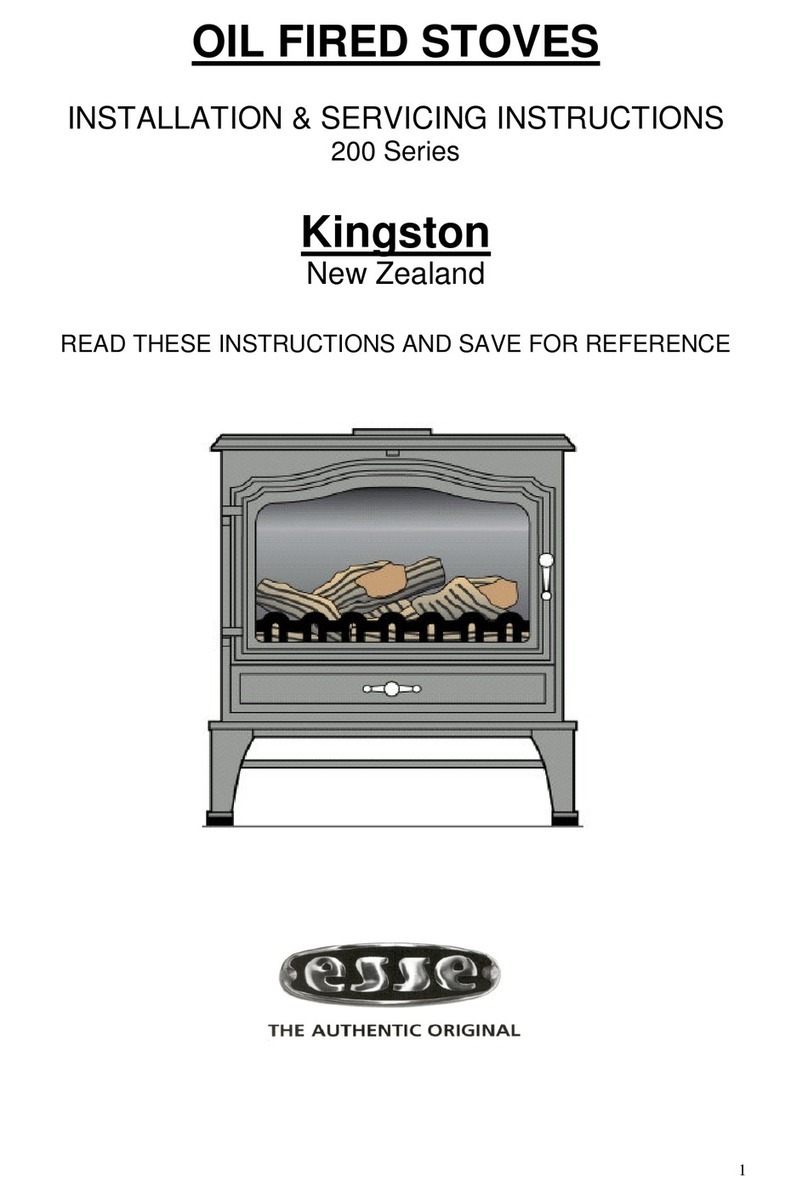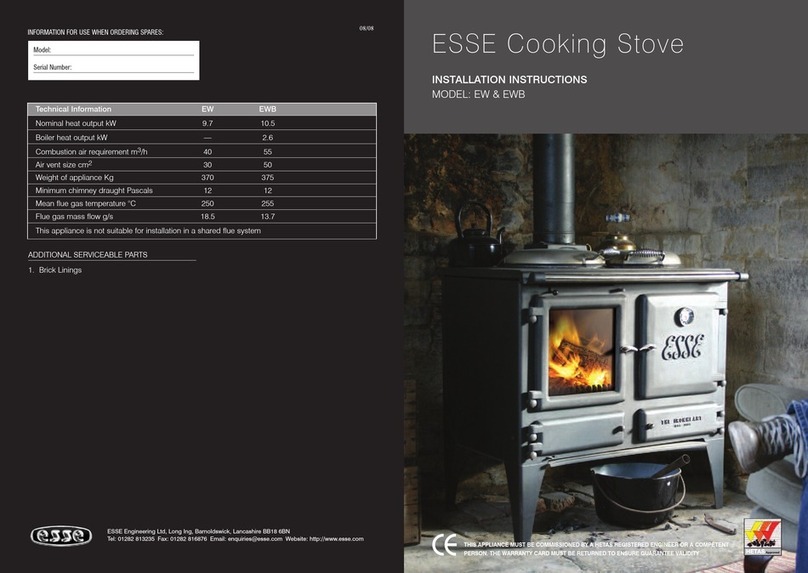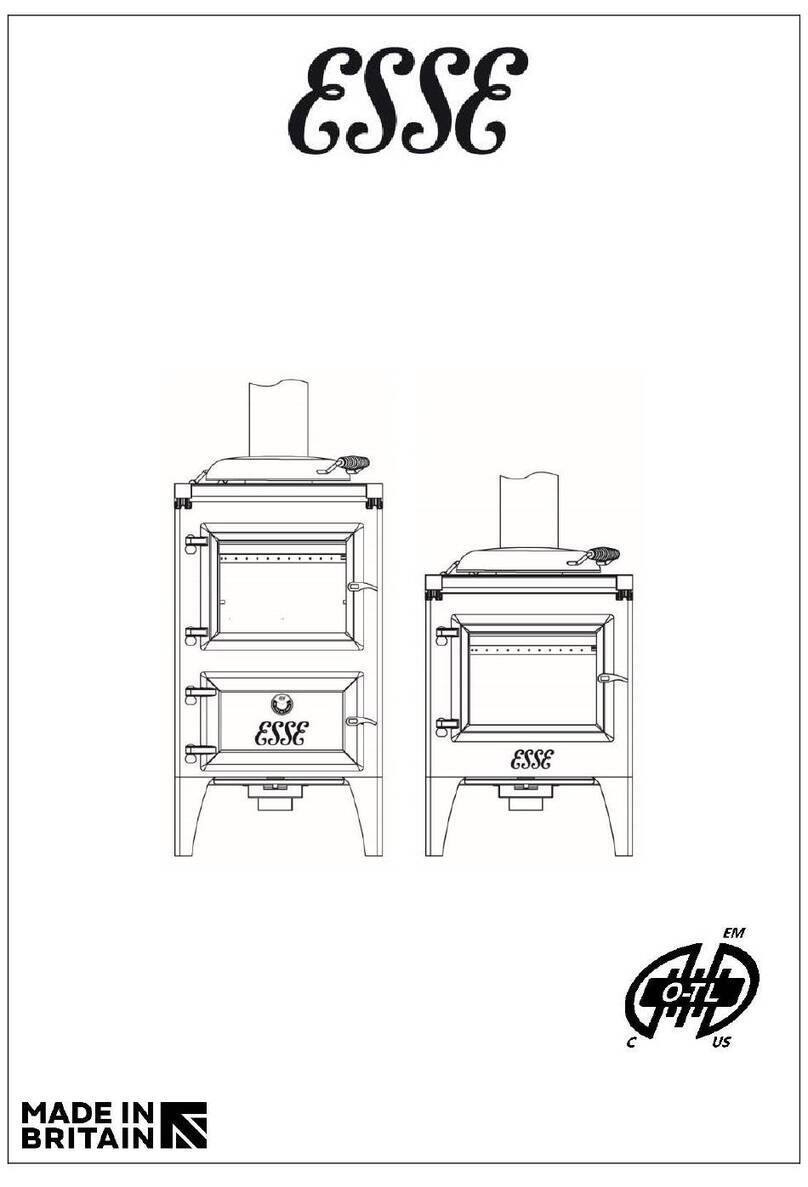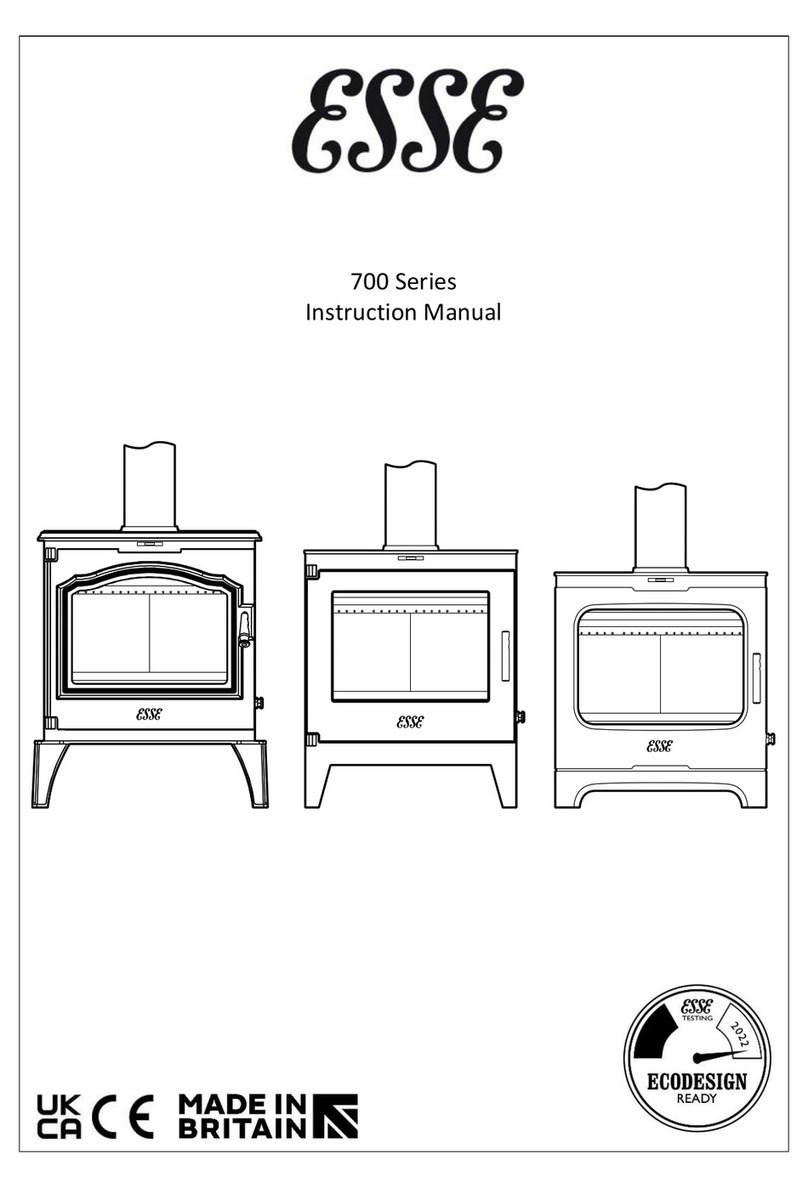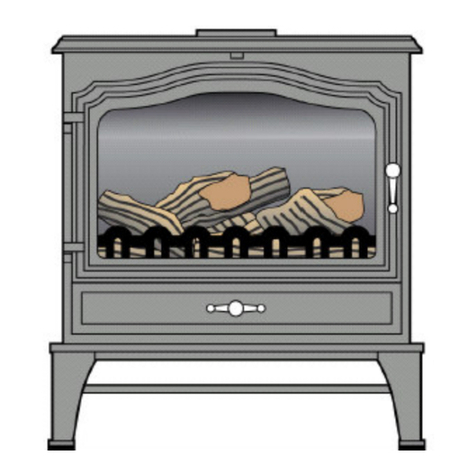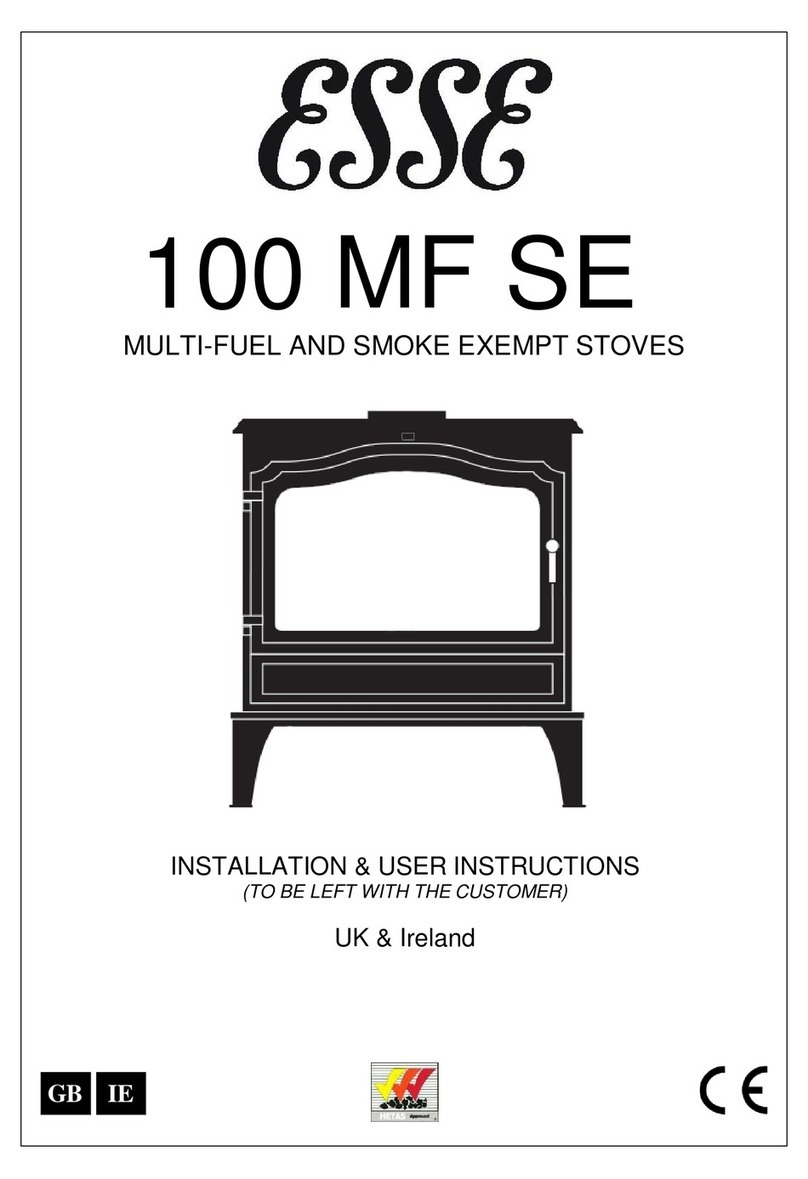Loading a large amount of wood into the stove all at once will reduce the temperature inside the stove. If the
temperature is too low, the gases given off from the wood will be too cool to combust resulting in a lot of smoke
covering the inside of the stove, including the glass, with soot. To combat this problem it is a good idea to increase
the temperature of the stove before loading by further opening the air inlets. Load the wood and leave the air controls
open until the moisture is driven out of the wood and the stove is back up to an efficient operating temperature. The
air inlets can then be reduced to hold the temperature steady. When loading wood, make sure that the end grain of
the wood in the stove is pointing away from the glass otherwise the moisture and gases coming from the end grain of
the wood will dirty the glass.
For best results use well seasoned hardwood such as Oak, Ash, or Beech. Allow wood to dry out under cover in
well-ventilated conditions for at least twelve months. Ideally moisture content should be between 15%-20%. Wood
is ready for burning when radial cracks appear in the end of the logs. Burning wood that is not seasoned will result in
tar being deposited in the stove, on the glass and in the flue ways. This build up of tar is a hazard and if it ignites
may cause a chimney fire. Resinous softwood burns well and gives a high output for short periods but not as
efficient and does not last as long as hardwood.
Peat is a fuel conveniently available in some areas and should be burned in the same manner as wood.
Before lighting the fire for the first time ensure that the baffle, and the side and back bricks are in position. Burning
without either will result in the stove castings overheating and being damaged.
Open the air wash control and the primary air control fully. Place some tightly rolled paper on top of some crumpled
paper on the base towards the back of the stove. On top of this, place some small pieces of wood and on top of that a
few small pieces of mineral fuel. Light the crumpled paper and close the door. Once the fire becomes established and
the fuel is burning, more fuel can be added. When the stove is hot and the fuel is no longer producing smoke, the air
wash control can be reduced. The burning rate of the fire can now be controlled with the spinner. As air from the
spinner flows up through the grate it will cool the grate bars preventing them from overheating and becoming
damaged. Reducing the spinner air inlet and introducing air only from the air wash will allow the fuel to burn but the
grate will not be cooled resulting in damage to the grate bars. When controlling the fire, the spinner should be altered
gradually. Reducing the primary air dramatically and all at once on a hot stove will cause the fuel to clinker and will
result in a build up of gases and smoke which could ignite with a bang the moment air is reintroduced.
Before adding a large amount of fuel, the grate should be de-ashed and the ash pan emptied. Add the fuel, sloping it
from the front coal bar up to the back of the stove to the level of the top of the back brick. Open the primary air inlet
and let the fire burn for a period on high rate in order to get the stove back up to temperature and drive off the
moisture and gases in the fuel. If a lot of smoke is produced on reloading, the air wash control can be opened further
to keep the smoke back from the glass. As the fire gets back up to temperature, reduce the air wash control and
reduce the primary air inlet to suit the burning rate. The exact setting of the air controls depends on a number of
variables including: the flue draught, the fuel used and the installation and so the best settings for your stove can
only be learned by experience.
Note: The above text shoul
The level of ash should not be allowed to build up to the level of the grate. If the level of ash becomes too high the
air through the grate will become restricted causing the grate bars to overheat and preventing the fuel from burning
efficiently.
The grate bars in the centre of the stove will wear more quickly than the ones at the edges. To ensure even wear,
swap the positions of the grate bars occasionally.
Ordinary bituminous house coal is not recommended and must not be burned in smoke control areas. Burning
bituminous house coal will result in a sooty stove and chimney, and the stove glass will require cleaning regularly.
There are numerous natural anthracites and manufactured smokeless fuels that will burn cleanly and have more
reliable burning characteristics. A list of these fuels and their suitability is produced by HETAS (www.hetas.co.uk).
Consult your local fuel merchant to find out what is available in your area. Petro-coke should not be used as it burns
very hot and may damage the stove castings.
The stove should only be cleaned when it is cold. The exterior can be dusted with a firm brush. Do not use a cloth, as
this will drag on the paint finish leaving lint on the surface. From time to time it may necessary to renovate the
extractor by repainting. High temperature stove paints in aerosol form are available from your stove dealer. Do not
use this form of paint until the stove is cold and always read the instructions on the container before starting to paint.
The door glass is made of a special heat resisting ceramic and may be cleaned when cold with proprietary glass
cleaning liquids and a dry cloth.
The following procedure should be followed if the stove is not to be used for a long period, summertime for instance.
Remove all the ashes from the grate and ash pan and use a vacuum cleaner nozzle to clean ash from the base of the
stove. Remove the baffle plate and brush the flue ways. Close the door and open the air inlet fully. This action will
allow air circulation through the flue ways and help to avoid corrosion and condensation.
T
O ADJUST THE DOOR HANDLE
(Fig. 12) – Undo the grub screw on the side of the door with an allen key (1), slide
handle out slightly (2) and relock the grub screw.
T
O ADJUST THE DOOR HINGE
(Fig. 13) – Open the door and locate the hinge block at the top & bottom of the door.
Insert allen key and unlock spindles (1). Slide door on spindles to adjust (2) then relock grub screws.
